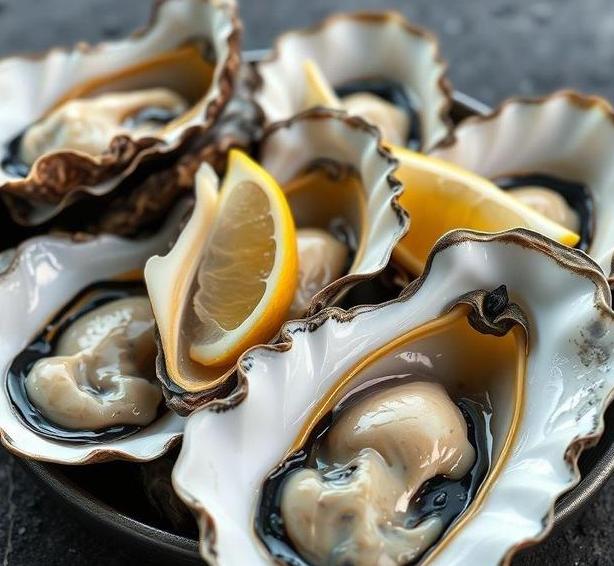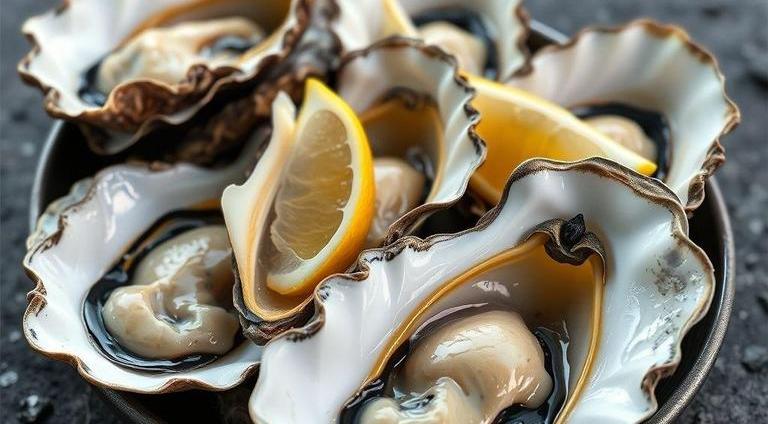Oysters, those succulent, briny treasures of the sea, have become synonymous with luxury and indulgence in many culinary circles. Whether you’re slurping them fresh on the half shell, grilling them, or preparing them for a special dish, oysters are an experience. But, as with all fresh seafood, oysters come with a limited shelf life. So, how can you enjoy oysters at their peak of freshness without worrying about spoilage? Well, understanding how oysters go bad, how long they last, and the best ways to store them is key to making sure you don’t miss out on their oceanic deliciousness.
In this guide, we’ll dive deep into everything you need to know about oysters, from their shelf life to the best ways to store them. Let’s take a closer look!
Can Oysters Go Bad?
Yes, oysters can absolutely go bad, and in fact, they can go bad quickly if not properly handled. As living creatures, oysters need to be kept alive until they’re consumed, and this means they have to be kept in conditions that prevent them from deteriorating. Oysters are filter feeders, meaning they take in water and filter it for nutrients. When they’re removed from the water, they’re essentially in a state of suspended animation. But once out of their natural habitat for too long, they start to spoil, losing both their flavor and texture.
The main factors that contribute to oyster spoilage are:
- Temperature: Oysters are very sensitive to temperature fluctuations. Storing them at improper temperatures, like at room temperature or in warm conditions, accelerates spoilage.
- Exposure to Air: Since oysters are filter feeders, their gills are open when alive, and exposure to air can dry them out, making them unfit for consumption.
- Time: Like most fresh seafood, oysters have a very limited lifespan once harvested.
When oysters go bad, they can become a breeding ground for bacteria like Vibrio vulnificus, which can cause severe food poisoning if consumed. So, it’s crucial to keep track of how long oysters have been stored and how they’re being handled.
Shelf Life For Oysters

Oysters are perishable, and their shelf life can vary depending on how they’re stored and whether they’re live or shucked. Here’s a quick breakdown:
-
Live Oysters (in-shell): These have the longest shelf life, provided they’re kept properly chilled. If stored correctly, live oysters can last for:
- 1-2 days when stored at room temperature (not recommended!).
- Up to 7 days when stored in the fridge. However, they should be consumed as soon as possible for the best flavor and texture.
-
Shucked Oysters (oysters removed from the shell): These are far more delicate and spoil faster than live oysters. Once shucked, they should be consumed within:
- 1-2 days in the fridge.
- Several hours if kept at room temperature (not recommended).
-
Frozen Oysters: If you need to store oysters for a longer period, freezing them is an option. Frozen oysters can last up to:
- 3-4 months in the freezer. However, freezing can alter their texture, making them better suited for cooked dishes rather than raw preparations.
-
Canned Oysters: These have a significantly longer shelf life due to the canning process and can last for:
- 1-2 years past the printed expiration date if unopened.
- 3-5 days in the fridge once opened.
Common Signs Of Spoilage
Knowing when your oysters have gone bad is crucial to avoid health risks. Here are the most common signs of spoilage to watch for:
- Closed Shells (Live Oysters Only): If an oyster’s shell is open and doesn’t close when tapped or squeezed, it’s dead and should not be eaten. Live oysters should have tightly closed shells.
- Unpleasant Odor: Fresh oysters should smell like the sea – clean and briny. If they emit a strong, sour, or foul odor (like ammonia or rotting flesh), they are spoiled and unsafe to eat.
- Slime or Discoloration: If the oyster’s meat looks slimy, discolored, or has developed a film on its surface, it’s a clear indication of spoilage.
- Soft, Mushy Texture: Fresh oysters have a firm texture. If the meat feels mushy or falls apart easily, it’s past its prime.
- Off Taste: If you’re eating an oyster raw and the taste is off, sour, or otherwise unpleasant, it’s a sign that the oyster has gone bad.
How To Store Oysters?

Storing oysters properly is the key to preserving their freshness and extending their shelf life. Here’s what you need to know:
- Refrigeration is Key: Live oysters should always be stored in the fridge to keep them fresh. If they’re in-shell, place them in a shallow dish or tray, and cover them with a damp cloth or paper towel. This will help maintain the correct humidity level and prevent the oysters from drying out.
- Never Store in Water: Oysters should not be submerged in water, as this can suffocate them and accelerate spoilage. Keep them in a breathable container (like a mesh bag or perforated plastic container).
- Store on Ice (Optional): If you want to keep your oysters as cold as possible, you can store them on a bed of crushed ice in the fridge. Just make sure they’re not sitting directly in the water as the ice melts, as moisture can cause them to spoil more quickly.
- Don’t Stack Them Too High: Make sure there’s enough space for the oysters to breathe. Stacking them too high can create a suffocating environment and make them spoil faster.
- Shucked Oysters: If you’ve removed the oysters from their shells, store them in an airtight container with their liquor (the natural liquid inside the oyster). Place them in the coldest part of the fridge and consume them within 1-2 days.
- Freezing Oysters: To freeze oysters, shuck them first and place them in a freezer-safe container with their liquor. They’ll last 3-4 months frozen. Thaw them in the fridge before cooking, but keep in mind that their texture might change.
Expert Tips
To ensure you’re enjoying the freshest, safest oysters, here are a few tips from seafood experts:
- Buy from a Trusted Source: When buying oysters, make sure they come from a reputable supplier who follows strict quality control standards. Always ask about the harvest date and the farm where the oysters were sourced.
- Check for Labels: If you’re buying packaged oysters (especially canned or frozen), check the packaging for a harvest date or an expiration date. If it’s close to expiring, consider passing on those oysters.
- Handle with Care: Oysters are delicate creatures, and rough handling can cause damage that speeds up spoilage. Always handle them gently and avoid dropping them or exposing them to extreme temperatures.
- Know When to Eat Them: Oysters are best eaten as soon as possible after purchase. The fresher, the better! Don’t be afraid to ask your fishmonger for advice on how long the oysters have been sitting out and how long they’re expected to last.
FAQs
How Can You Tell If Oysters Have Gone Bad?
Oysters that have gone bad typically have a strong, unpleasant odor, similar to ammonia or spoiled seafood. Their shells may also be open or cracked, and they may not close when tapped. If the oyster meat looks slimy, discolored, or dry, it is a sign that it has spoiled.
How Long Do Oysters Last In The Fridge?
Fresh, live oysters should be consumed within 1-2 days of purchase. They can be stored in the fridge for up to 3 days, but it’s best to eat them as soon as possible for the best taste and safety.
Can Oysters Go Bad After Being Shucked?
Yes, shucked oysters can go bad quickly. If not eaten within a few hours, they should be stored in the refrigerator and consumed within 1-2 days. Shucked oysters have a shorter shelf life because they lose their protective shell and are more vulnerable to bacteria and spoilage.
How Should Oysters Be Stored To Prevent Them From Going Bad?
Live oysters should be stored in the refrigerator in a breathable container, such as a mesh bag or a bowl covered with a damp cloth. They should be kept at a temperature just above freezing (34-38°F or 1-3°C) and never submerged in water, as this can cause them to die. Shucked oysters should be stored in an airtight container in the fridge and eaten within 1-2 days.
Can Oysters Go Bad If Left Out?
Yes, oysters can spoil quickly if left out at room temperature for more than 2 hours. Bacteria, such as Vibrio vulnificus, can proliferate rapidly in warmer conditions, posing serious health risks. Oysters should be kept cold at all times to prevent them from going bad.
Is It Safe To Eat Oysters That Have A Slightly Open Shell?
If an oyster’s shell is slightly open, tap it gently. A fresh, live oyster should close its shell tightly. If it does not close, it is likely dead and should not be eaten. Eating oysters that are dead or have a damaged shell can increase the risk of foodborne illness.
Can Oysters Go Bad In The Freezer?
Oysters can be frozen to extend their shelf life, but their texture and flavor may change. Live oysters should be shucked before freezing, as they cannot survive in the freezer with their shells intact. Once thawed, they should be eaten immediately and should not be refrozen.
What Happens If You Eat A Bad Oyster?
Eating a bad oyster can lead to food poisoning, causing symptoms such as nausea, vomiting, diarrhea, stomach cramps, and fever. In some cases, consuming contaminated oysters can lead to more serious illness, especially for individuals with weakened immune systems.
Do Oysters Have A Long Shelf Life?
No, oysters have a relatively short shelf life. Live oysters should be consumed within 1-2 days of purchase for optimal freshness. Shucked oysters have an even shorter shelf life, typically lasting only 1-2 days in the refrigerator. Proper storage is essential to prevent spoilage.
Can Oysters Go Bad In A Jar Or Can?
Canned or jarred oysters can last much longer than fresh oysters. When properly sealed, they can last for months or even years. However, once opened, they should be refrigerated and consumed within 2-3 days. Check the expiration date on the packaging and discard any oysters that have an off smell or appearance.